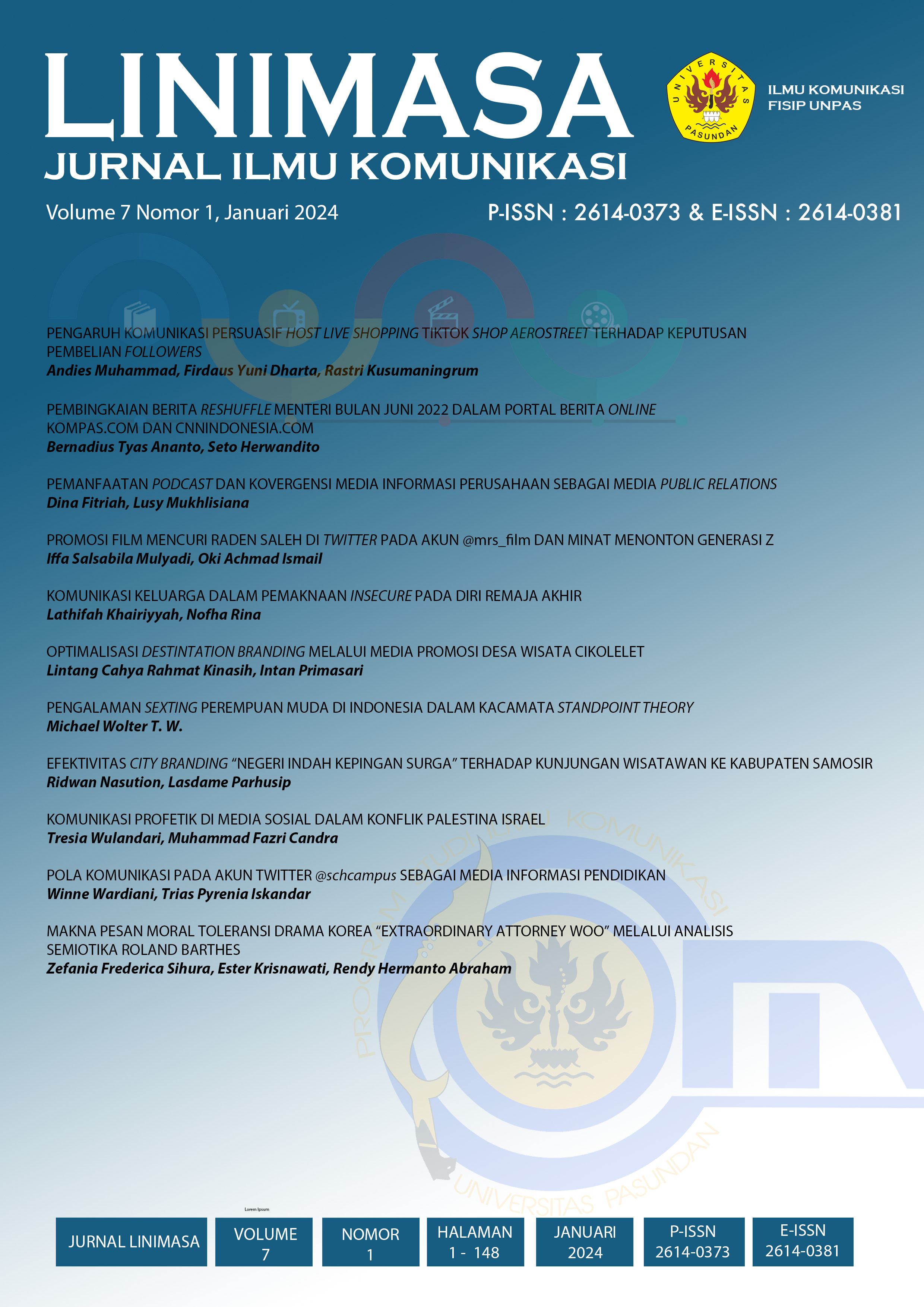POLA KOMUNIKASI PEMBELAJARAN PADA ANAK DENGAN HAMBATAN PENDENGARAN DI SLB SUKAPURA KOTA BANDUNG
DOI:
https://doi.org/10.23969/linimasa.v7i1.13356Keywords:
BISINDO, communication patterns, deafAbstract
Children with hearing impairments experience difficulties in recognizing sounds around them so they usually utter meaningless words. Thus, of course, when writing a sentence they also experience errors in the form of writing meaningless words and sentences. One of the obstacles in providing learning services to children with hearing impairments is the lack of appropriate learning that is applied to them. The lack of innovative media is an obstacle for teachers in SLB. This research uses a qualitative research method with a phenomenological type of research consisting of field observations and in-depth interviews. The informants interviewed by the research team were students, teachers and parents at SLB Sukapura, Bandung City. Using the symbolic interaction theory approach from Herbert Mead, the results of this research found that the language used as a communication medium was BISINDO sign language, because BISINDO is the natural language of children with hearing impairments and they feel they understand better if they use BISINDO. In fact, it is not the child who follows the teacher's language but the teacher who follows the child's language. Not a few other special schools also use SIBI sign language as a learning communication medium because SIBI is considered the standard Indonesian sign language whose language structure is in accordance with Indonesian. But in reality, SIBI was created by the government, which is a hearing person, while sign language is a language belonging to people with hearing impairments, which of course had to be made by hearing impaired people.
Downloads
References
Ahmadi, Dadi. (2008). Interaksi Simbolik: Suatu Pengantar. Jurnal Mediator, 9 (2),302-303
AW, Suranto. (2011). Komunikasi Interpersonal. Yogyakarta: Graha Ilmu Aziz, Safrudin. (2015). Pendidikan Seks Anak Berkebutuhan Khusus.
Yogyakarta: Gava Media
Bajari, Atwar. (2015). Metode Penelitian Komunikasi: Prosedur, Tren, dan Etika. Bandung: Simbiosa Rekatama Media
Budyatna, Muhammad, Ganiem, Leila Mona. (2014). Teori Komunikasi Antarprbadi. Jakarta: Kencana Prenada Media Group
Bungin, Burhan. (2013). Metodologi Penelitian Sosial dan Ekonomi: Format- format Kuantitatif dan Kualitatif untuk Studi Sosiologi Kebijakan, Publik, Komunikasi, Manajemen dan Pemasaran (Edisi Pertama). Jakarta: Kencana Prenada Media Group
Chapman, G., & Cambell, R. (2013). Lima Bahasa Kasih untuk Anak- anak.Tangerang: Interaksara
Gargiulo, R. (2006). Special Education in Contemporarry Society. USA: McMillan.
Griffin. (2012). A’First Look at Communication Theory: Eight Edition. New York: McGraw-Hill
Hallahan, D & Kauffman, J,M., (2009). Exceptional Learners an introduction to Special Education eleventh edition. USA: Pearson
Hidayat, A., & Suwandi A. (2013). Pendidikan Anak Berkebutuhan Khusus Tunanetra. Jakarta Timur: Luxima Metro Media
Hidayat, Dedy N. (2003). Paradigma dan Metodologi Penelitian Sosial Empirik Klasik. Jakarta: Dapartemen Ilmu Komunikasi FISIP Universitas Indonesia
Liliweri, Alo. (1991). Komunikasi Antarpribadi. Bandung: Citra Ditya Bakti Littlejohn,
Stephen W & Karen A. Foss. (2009). Teori Komunikasi (Edisi 9). Jakarta: Salemba Humanika
Morissan. (2013). Teori Komunikasi. Bogor: Ghalia Indonesia
Mudjiono, Yoyon. (2009). Ilmu Komunikasi. Surabaya: IAIN Sunan Ampel Press Mulyana, Deddy. (2003). Metodologi Penelitian Kualitatif. Bandung: PT Remaja
Rodakarya
Neuman, William Lawrence. (2003). Social Research Methods: Qualitative and Quantitative Approaches. Pearson Education.
Patton, Michael Quinn. 1980. Qualitative Evaluation Methods. Beverly Hills – London: Sage Publications
Wardani, dkk. (2007). Pengantar Pendidikan Luar Biasa. Jakarta: Universitas Terbuka
Wood, Julia T. (2019). Komunikasi Interpersonal: Interaksi Keseharian (Edisi ke-6). Jakarta: Salemba Humanika















